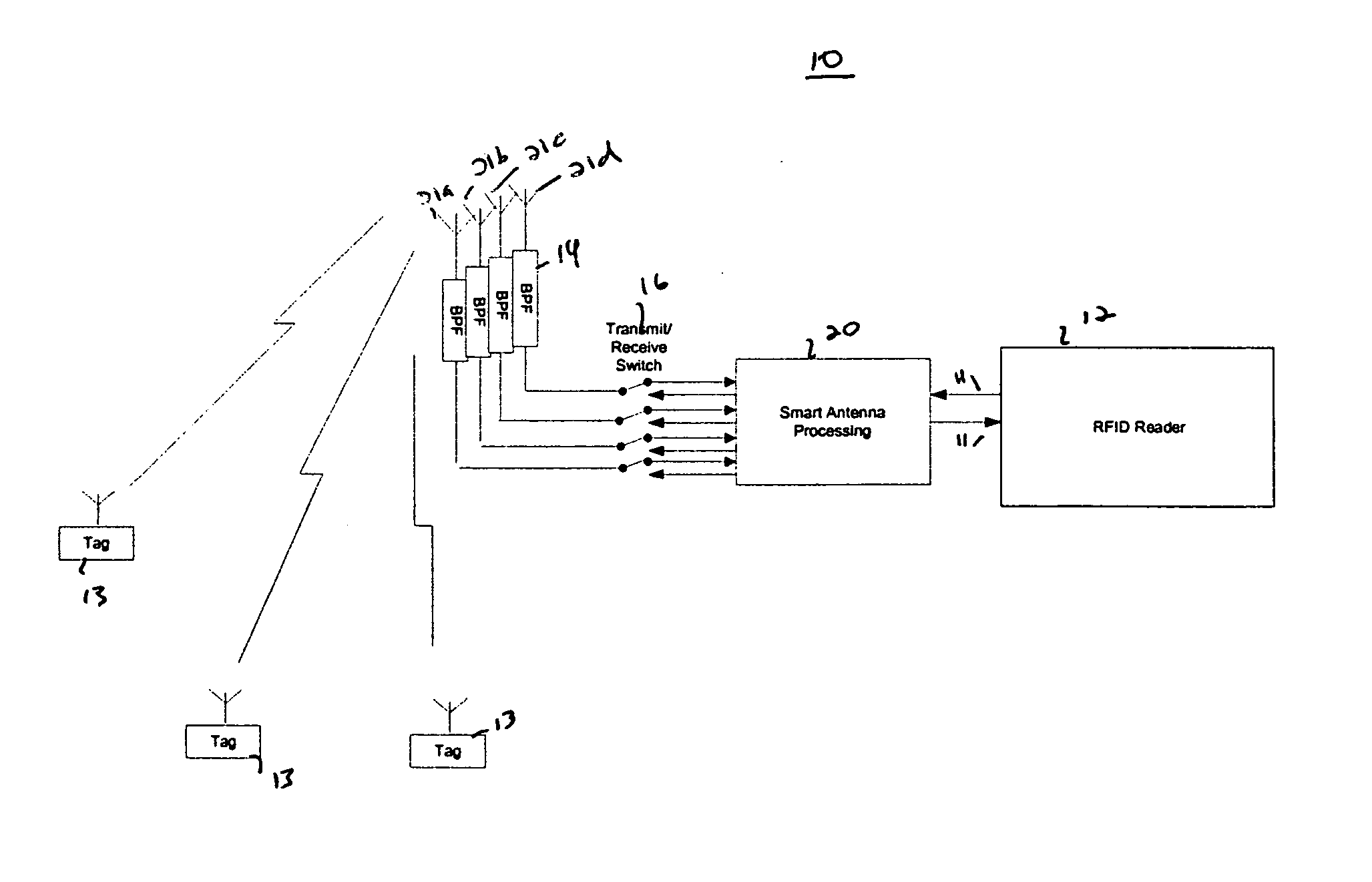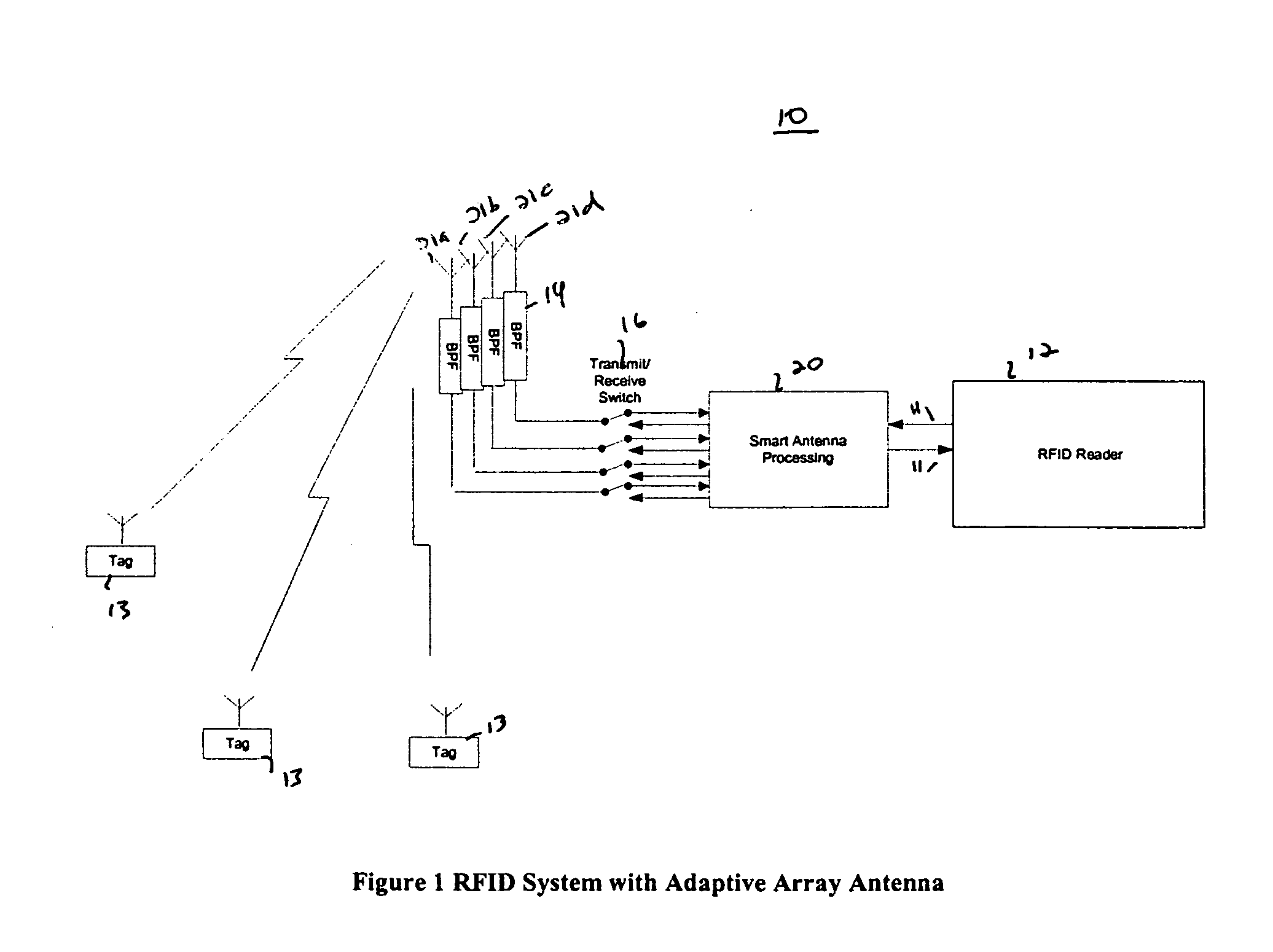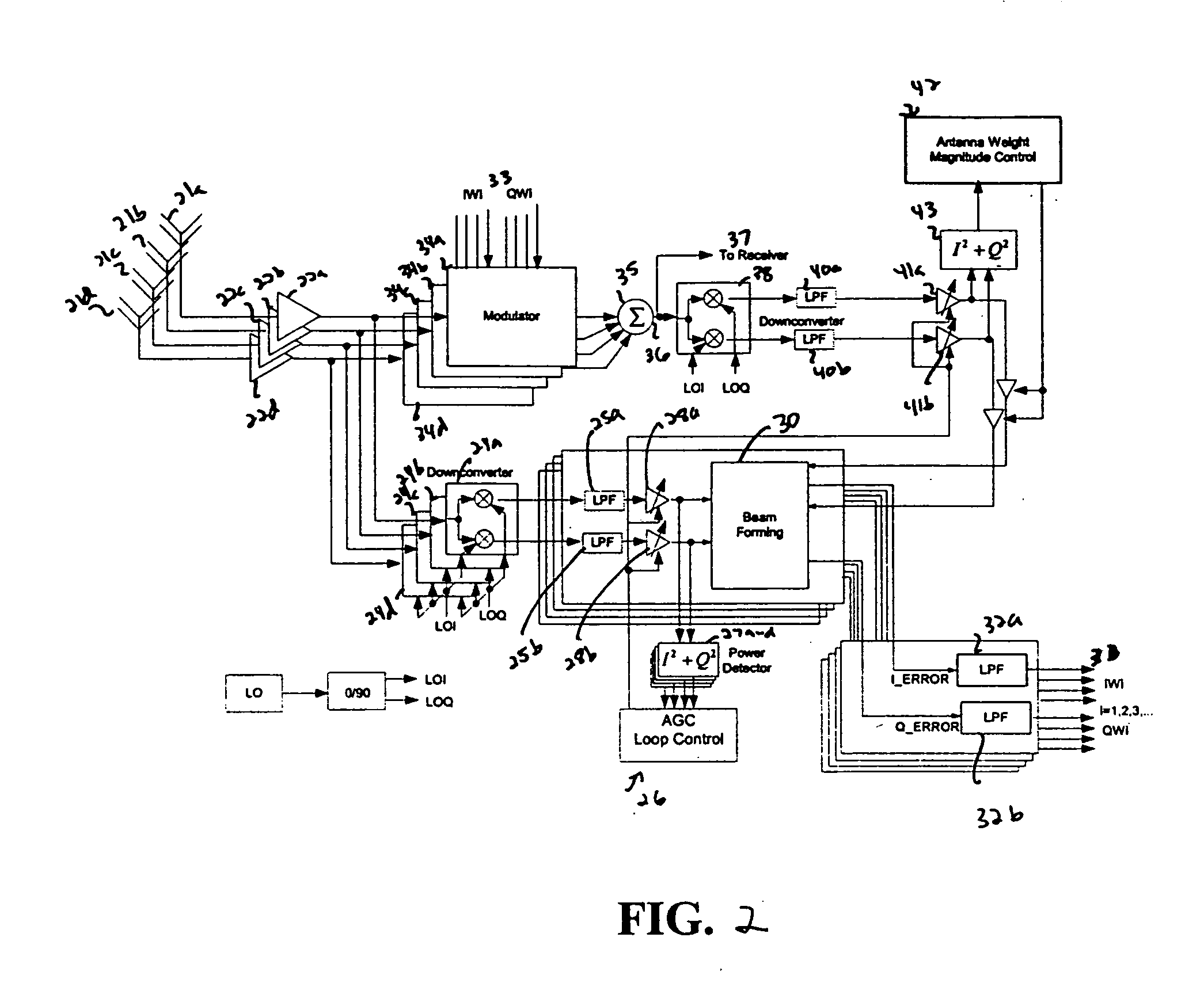RFID system with an adaptive array antenna
a technology of adaptive array and rfid system, which is applied in the direction of electrical signalling details, burglar alarm mechanical actuation, instruments, etc., can solve the problems of limited range operation of conventional rfid system, achieve the effect of increasing the operating range of the rfid system, maximizing and increasing the received signal-to-noise ratio
- Summary
- Abstract
- Description
- Claims
- Application Information
AI Technical Summary
Benefits of technology
Problems solved by technology
Method used
Image
Examples
Embodiment Construction
[0013] Reference will now be made in greater detail to a preferred embodiment of the invention, an example of which is illustrated in the accompanying drawings. Wherever possible, the same reference numerals will be used throughout the drawings and the description to refer to the same or like parts.
[0014]FIG. 1 is a schematic diagram of Radio Frequency Identification (RFID) system 10 in accordance with the teachings of the present invention.
[0015] RFID reader 12 transmits and receives signals 11 to and from RFID tags 13. RFID reader 12 includes smart antenna processing module 20 for adaptively combining signals from a plurality of antennas 21a-21d. Smart antenna processing module 20 is connected by transmit receive switches 16a-16d and bandpass filters 14a-14d to antennas 21a-21d. Smart antenna processing module 20 can combine signals 11 to maximize the received signal-to-noise ratio (SNR) based weights determined by maximal ratio combining (MRC).
[0016] There are various ways to ...
PUM
 Login to View More
Login to View More Abstract
Description
Claims
Application Information
 Login to View More
Login to View More - R&D
- Intellectual Property
- Life Sciences
- Materials
- Tech Scout
- Unparalleled Data Quality
- Higher Quality Content
- 60% Fewer Hallucinations
Browse by: Latest US Patents, China's latest patents, Technical Efficacy Thesaurus, Application Domain, Technology Topic, Popular Technical Reports.
© 2025 PatSnap. All rights reserved.Legal|Privacy policy|Modern Slavery Act Transparency Statement|Sitemap|About US| Contact US: help@patsnap.com



